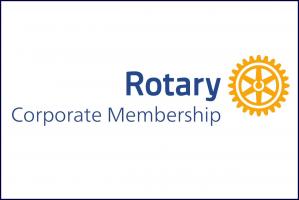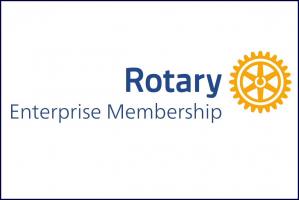North Star Explained
Making room for new membership models to mature

The audacious goal here in Great Britain and Ireland is to rebuild and surpass membership levels of some 30 plus years ago, targeting 60,000 members by 2028 – this is our North Star!
STORY BY AMANDA WATKIN,
GENERAL SECRETARY, ROTARY GREAT BRITAIN & IRELAND
To know where we are heading, it helps to understand our past and the reason why are where we are right now.
It feels to me that our leadership has consistently been singing the annual mantra of plus-one net gain in our clubs forever. Of course, this made sense from a futures perspective but as a member of a club which chartered with over 30 members that grew ‘easily’ to over 70 members by its 10th anniversary, did we listen to our leadership, or simply ride the crest of our personal wave?
I speak here as part of the leadership of that club, as part of the leadership of that district and even as part of the leadership for Rotary Great Britain and Ireland, way before taking on the role of General Secretary. We most certainly rode the crest of the wave without thinking about the inevitable crash onto the shoreline in front of us.
When we look back at the membership data, we need to lower the rose-tinted spectacles because membership has been in decline for many decades.
People pass to higher service, peoples’ life priorities change and yes, people fall out of favour with each other. The revolving door of Rotary is constantly turning, sometimes for good reason, and sometimes it could have been slowed down, or stopped.
We all have our own Rotary door(s), the one we came in through and the one we will leave by. The question for each of us is not if we leave, but when and why.
As I write this piece, my firm belief is that it will be health/death that is written on my exit door. Some of the reasons why I feel this way are shared in this edition of the magazine and, of course, in the project impact stories you will all have ready in previous editions.
It’s not because the stories and information are about me, but because what is being showcased is the breadth of possibility that Rotary brings to me, the different ways I can connect with others, and how those connections lead to friendships and service which will surpass any I could find outside of Rotary.
But the question we seek to answer is why has Rotary membership declined at the pace it has over the past three decades? The answer is multi-faceted and nuanced, but let’s break it down in a more simplistic way, to the three ‘Cs’:
* Complacency
* Competition
* Challenge
“WE ALL HAVE OUR OWN ROTARY DOOR(S), THE ONE WE CAME IN THROUGH AND THE ONE WE WILL LEAVE BY. THE QUESTION FOR EACH OF US IS NOT IF WE LEAVE, BUT WHEN AND WHY”
COMPLACENCY
When you’re riding high, it’s easy to take your eye away from the future picture, to miss the projections given from the small indicators of the day, and to simply enjoy the moment.
We have a global structure that brings in annual change, making it difficult to retain organisational memory, even with a fair level of continuity. Each year brings new priorities, new shiny areas to focus on and of course personal perception as who wants to be the voice of concern when we are by nature an optimistic, can-do collection of good people.
Even when we were being told by a small group of people, statisticians and marketing folk alike that future sales were going to be significantly difficult, we were not collectively ready for change. No Rotary member that I have come across (and there have been thousands over the last 20 plus years!) ever joined Rotary to help with ‘sales’; they joined to fulfil a passion or need within themselves and understandably so.
Rotary is a membership organisation and when you walk through the front door you are looking to meet other like-minded people. Our vision statement says it all: ‘Together, we see a world where people unite and take action to create lasting change across the globe, in our communities, and in ourselves’. It does not say ‘… and sell that to others’!
As a result, even when we step into leadership positions as volunteers, and I am in that position via my club just as you are, we remain primarily focussed on service.
Complacency is a strong term, but I’m using it to stimulate our collective thinking. We have been complacent, but that complacency has changed to concern, which leads on to the second ‘C’ of our story.
“ROTARY IS A MEMBERSHIP ORGANISATION AND WHEN YOU WALK THROUGH THE FRONT DOOR YOU ARE LOOKING TO MEET OTHER LIKE-MINDED PEOPLE”
COMPETITION
Society has changed with more charities then ever being setup. According to PolicyBee, the UK had 168,893 registered charities in March 2023. At least another 20,000 not-for-profit organisations have charitable status but don’t feature on the register. The Charity Commission received 8,583 applications to register a charity in 2022/23, 48% of which were successful. In the same period, 4,146 charities were removed from the register.
Why does this matter? Rotary clubs are not charities, but the majority do operate a Trust or Charitable Incorporated Organisation (CIO or SCIO for Scotland). This means that, by default, there will be a level of competition between clubs and others undertaking work across local, national and international communities.
Of course, this ‘competition’ is often turned into partnership or collaborative relationship, but why would a person join Rotary rather than simply give money and/or time to a cause-specific local charity?
One answer to this question is variety. Rotary does not limit the vision of its members. If you have found an issue, assessed the need and think you have a plan, Rotary members can help you realise that vision to make lasting change.
We are not a ‘cash-cow’ for any particular cause, but we do raise funds, and through The Rotary Foundation access grants support projects solving problems.
Wrapped into the answer above about variety, is our network. Even now as we teeter on a membership number of 33K people which still represents a significant network of skill, experience, connection and enthusiasm to draw from.
But we have to make the effort to connect and to connect in positive and meaningful ways; to connect without fear of being rejected because our idea does not resonate with someone else. That’s where the values and behaviours to be expected within our organisation can also set us apart from the competition. We do stand on the value foundations of Service, Fellowship, Diversity, Integrity and Leadership. How amazing is that?
Our competition though is not simply other organisations. In this technology age and fast-paced society, people have many competing demands. Family support and work to meet economic challenge come first, followed by ways to relax and de-stress such as Netflix (others are available!) and the gym. Where does Rotary fit with these competitive demands? Well, that brings us neatly onto the third ‘C’ of Challenge…
“OUR COMPETITION IS NOT SIMPLY OTHER ORGANISATIONS. IN THIS TECHNOLOGY AGE AND FAST-PACED SOCIETY, PEOPLE HAVE MANY COMPETING DEMANDS ”
CHALLENGE
When the world around us has changed, but we haven’t, then that is a major challenge. How quickly we notice how change can be a major challenge, and our willingness to embrace that change may also be a major challenge.
In the past 20 years, the world has changed and technology use has skyrocketed. In 2002, the share of individuals across the UK using the internet stood at 56% compared to 98% in 2024.
Expectations have changed, and even if we take pre-pandemic data from 2019 we can see that non-users are predominantly in the 75+ year demographic data set at 51%, but there are zero non-users in the 25-34 year age band. As we look to Rotary’s future, these people will form the major part of our membership, so we need to adapt and meet their digital expectations today.
Our challenge is the transition process, to ensure we do not disenfranchise members who have enjoyed and contributed to a very different member experience. Our clubs are integral in meeting this challenge, having plans that ensure strong member-to-member communication, with an inclusive approach to service and friendship.
On the macro-level Rotary Great Britain and Ireland must look ahead. New approaches to membership models, service potential and network connections have been strategically mapped. However, no matter what these plans may look like, they need collaboration and co-operation from all of us, as the existing members are a strong body with the ability to disrupt change if it challenges their experience, such that they no longer feel aligned to brand Rotary.
For North Star to work we need to trust and support one another. We need to make room for new membership models to mature. We need to accept that not everything is known at this stage, yet we are developing policy and procedures. We are a pilot for the Rotary world and other regions are eagerly awaiting the opportunity to adapt as we have been permitted by the Rotary International Board.
“FOR NORTH STAR TO WORK WE NEED TO TRUST AND SUPPORT ONE ANOTHER. WE NEED TO MAKE ROOM FOR NEW MEMBERSHIP MODELS TO MATURE”
In all of this though, we need to understand what the challenge of this change brings for each of us. Human nature makes us look at the what’s in it for me question (WIIFM). The overarching answer to this question is the continuation of your Rotary; it gives you a chance to expand your network, providing a strong foundation for future generations, which is part of your legacy.
If we do nothing, then the pressure on each of us as current dedicated Rotary members will increase, with less people to deliver the support needed by communities both at home and overseas. If we do nothing, our network of like-minded ‘friends’ will diminish, taking some of our personal-social benefit with it.
The change management needed to show the WIIFM of North Star means taking a bit of a leap of faith to be honest. Many people want/need proof of concept and this has been given over the past three to four years with the development of the first new model of Direct Membership. This model currently accounts for just shy of 400 members, with nearly 100 more in process. All these people are wanting to help or explore opportunities to deliver community support.
The WIIFM of this is the chance to expand your pool of volunteers and grow your network through building new relationships. We are all different and it takes time to build friendships, but it simply starts with that first conversation, so shall we take a positive challenge and commit to getting to know our new members today?



